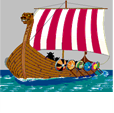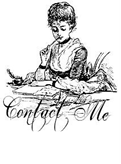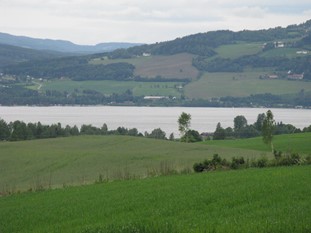Archive for the ‘Norway’ Category
A Visit to a Stave Church
 When I travel, whether I am on a research trip or not, I look for genealogy connections to the places I am visiting. This week we drove around the Black Hills of South Dakota. In Rapid City we stopped at a spot that linked us to our Norwegian heritage.
When I travel, whether I am on a research trip or not, I look for genealogy connections to the places I am visiting. This week we drove around the Black Hills of South Dakota. In Rapid City we stopped at a spot that linked us to our Norwegian heritage.
The Chapel in the Hills retreat (https://www.chapel-in-the-hills.org/) is home to a spectacular Norwegian stave church. It was built in 1969 as an exact replica of the Borgund Stavkirke in Laerdal, Norway. I first visited this place as a girl shortly after its construction.
The original church building, one of Norway’s oldest and best-preserved, dates to the 12th century. It sits at the end of the longest fjord in Norway, the Sogn fjord. The builders at that time used the same construction techniques as those for Viking longboats. The church was built with a wood called malmfuru (a very hard type of fir) that is no longer available.
The South Dakota stave church was built instead with North American Douglas fir. It is called a stave church because it uses large wood pillars, or staves, to support the building. It sits on a foundation of flat stones. The wood is fastened with dowel pins, not nails. The only metal in the building consists of door hardware and locks. The structure is embellished with beautiful wood carvings.
From my first visit many years ago, I remembered only a church out in the woods. The site has grown since then. In addition to the church building, the chapel site now includes a meditation trail, an authentic grass-roofed house (stabbur) that serves as a gift shop, and a log cabin museum. The museum was built by a Norwegian prospector who arrived during the Black Hills gold rush. It displays antiques that were either brought from Norway or made by Norwegian settlers.
The Chapel in the Hills was conceived and built to expand the ministry of the Lutheran Vespers radio hour. Today it is a special ministry of the Evangelical Lutheran Church in America. Its mission is to provide a place of beauty and inspiration to both local residents and tourists. Church services and weddings take place there.
This wonderful site helps preserve the area’s Scandinavian faith and heritage. It was a joy to see it again
Fading Christmas Traditions
 The Nordic immigrants in my family arrived in America in the early 20th century. They brought with them their way of celebrating Christmas.
The Nordic immigrants in my family arrived in America in the early 20th century. They brought with them their way of celebrating Christmas.
In this tradition, families gathered on Christmas Eve to share holiday food and exchange gifts. Santa Claus (Julenisse in Norway and Joulupukki in Finland) would knock on the door to leave a special gift for each child in the household.
The next morning, on Christmas Day, these devout people attended their Lutheran church to mark the Savior’s birth.
I have always loved celebrating the Christmas holiday this way, but it is becoming harder as the years go by. The Scandinavians have assimilated into the American way of life, and their former practices have given way to the dominant culture.
Yet even as most people seem to have switched to opening Christmas gifts in the morning on the 25th, I would rather attend church then. This presents a problem for me because most Lutheran churches no longer hold a service on Christmas Day. On the day before Christmas, they bend over backwards to have services all day and evening, and then tell you to stay home on Christ’s birthday.
This year my own congregation has decided to follow the new pattern and skip a Christmas Day service. I asked the church office to point me to another congregation in the area that still schedules a December 25 worship service. They could not.
After some internet searching, I finally found one. Only one. You can bet I will be in the pew there on Christmas morning, even as this tradition fades away all around me.
Leif Erikson Day
 All the proud Scandinavians like to remember Leif Erikson Day every year on October 9.
All the proud Scandinavians like to remember Leif Erikson Day every year on October 9.
The day honors the Viking explorer who is thought to have been the first person from the old world to set foot in the new. Five hundred years before Columbus, Leif the Lucky, as he was known, was perhaps blown off course while sailing from Norway to Greenland. Or maybe he traveled there deliberately after hearing of lands to the west from an Icelandic trader. The Norse sagas tell conflicting tales.
When Leif and his crew landed in North American, they noted the vast forests. They also spotted abundant grapes growing so they named the new land Vinland (Land of Wine).
Unfortunately, the sagas do not tell us the coastal location of Vinland. It remained a mystery until archaeologists found Viking-type ruins in northern Newfoundland at a place called L’Anse aux Meadows. Perhaps this is where Leif Erikson stopped.
Americans began observing Leif Erikson Day in 1964. President Lyndon Johnson began the tradition of issuing an annual proclamation to remember the Viking and to honor the contributions of Americans of Nordic descent.
October 9 has no connection to Leif Erikson himself. The day was chosen because the wave of Norwegian immigration to America began on October 9, 1825 when the ship Restauration from Stavanger, Norway arrived in New York.
How will I celebrate Leif Erikson Day and my Viking heritage tomorrow? One of the Sons of Norway lodges in California is hosting an online talk about the explorer, and I may tune in for that.
Leif Erikson Day calls for Nordic refreshments, too. My husband/tech advisor and I plan to bring out the aquavit as we honor the Viking spirit of discovery. Skål!
Norwegian Crafts Take the Stage
 During this extended stay-at-home time, I have missed gathering with others who share my love of all things Norwegian. Our Sons of Norway lodges have been shuttered for months. From my local lodge, only the genealogy club has continued with online meetings.
During this extended stay-at-home time, I have missed gathering with others who share my love of all things Norwegian. Our Sons of Norway lodges have been shuttered for months. From my local lodge, only the genealogy club has continued with online meetings.
All the other activities for the year so far have been cancelled. We have had no Lodge meetings since March, no Syttende Mai celebration in May, and no summer picnic. The cooking club is on hiatus. It looks like we will not be able to host a lutefisk dinner this year.
When I learned that our District Six umbrella organization that oversees lodges in Arizona, California, Colorado, Nevada, and Utah would host a craft Show and Tell on Zoom, I knew I had to tune in. It took place last weekend.
Members from all over these states showed off the Norwegian craft work they have been doing during the isolation period. We have some talented members.
People took turns describing their work on traditional Norwegian folk art projects like hardanger embroidery, rosemaling, and wood carving. Some painted Norwegian scenes. One man wove blankets using patterns from textiles found in Viking burial sites.
My own husband/tech advisor showed a short movie of Norwegian scenes composed from photos we have taken. He set it to background music he had arranged using a Norwegian folk tune. It included a clip of his Norwegian grandfather playing the violin in the 1950’s.
The afternoon Show and Tell event gave us a great opportunity to see all the friendly faces from around our Super Six District. Perhaps some participants even found inspiration to take up a new craft or to begin a new project using a familiar one. Norwegian craft work can offer a wonderful pastime when we, like our forebears during long Nordic winters, must stay home.
Practicing Hygge
 HYGGE: a Danish word for a cozy and comfortable mood created by enjoying the simple things in life. It derives from the Old Norse word for well-being.
HYGGE: a Danish word for a cozy and comfortable mood created by enjoying the simple things in life. It derives from the Old Norse word for well-being.
During these days of a frightening epidemic, the people of my state have been ordered to stay at home. Some have difficulty with this, but I like the idea of embracing a hygge lifestyle instead. The Danes have mastered it, and the Norwegians tend to follow it a bit, too.
Between my husband/tech advisor and me, we share a good deal of Norwegian ancestry. Neither of us remembers our grandparents talking about hygge, but this Scandinavian coziness comes naturally to us. It is how we grew up.
We do these things to create our own hygge household:
- Wear comfortable clothes. For us, that means jeans, sweaters, and flannel shirts.
- Turn on the fireplace and burn candles. With March being the snowiest month in Colorado, we continue to have cold weather even though the calendar tells us it is spring. A fire feels good and the candles add fragrance and a warm glow.
- Cook comfort food and bake homemade sweets. We grew up eating casseroles and soups, and now we have plenty of time to pull out the old family recipes. My mom always had a homemade cake or cookies on the counter, and I do, too.
- Take long, solitary walks. We try to get some fresh air every day, although it has become a challenge to keep our social distance. Coloradans are outdoorsy, and everyone wants to get out of the house. The local sidewalks and trails are busy.
- Equip our favorite armchairs with good books and cozy throw blankets. As avid readers, we spend a lot of time here with the fire and the cookies).
Practicing hygge seems to come naturally to us. Each of these things helps create the hygge atmosphere our ancestors cherished.
When we adopt these understated luxuries in our everyday life, our isolation period becomes something enjoyable instead of an irritant.
A High and a Low
Genealogists continually collect information for their family trees. Some of it makes us happy, some does not. I received a bit of both this week.
Whoo Hoo! More Ancestors!
A distant cousin of Norwegian descent contacted me this week to ask about sharing family stories. Of course, I am always delighted to do this. She gave me the link to her family website in return.
I found our shared family tree on her site (http://www.kinstories.com/johnson-kin.html). We both descend from Martha Karoline Dorthea Hansdatter (1841-1900) who lived her life in Norway. My new cousin’s family descends from Martha’s grandson, Helmer Johnson. My line comes through Martha’s youngest daughter, Sofie Sivertsdatter. Both Helmer and his aunt Sofie immigrated to America in the early 1900’s. Sofie sponsored Helmer, who arrived later than she did.
Over the years the two branches of this family lost touch with one another.
Now I have learned that my new cousin has posted online several generations of Martha’s family, back to the early 1700’s. She has done a tremendous amount of research, and I am glad she has made it available for the rest of us. She has done good genealogical work, sourcing all her information.
A Terrible Accident
We received word earlier this week of a tragic death in our family. Justin Robbins (abt. 1980-2019) died all too soon of an accidental gunshot wound. He leaves behind his two young daughters, my husband/tech advisor’s great-nieces.
I always feel a pang when I must enter a death into my genealogy database. A senseless event like this feels even worse. RIP, Justin.

The Trip—Part 1
Norway and the Baltic offer spectacular views, visits to historic cities, and access to ancient cultural sites. We just returned from this region after a three-week trip with relatives.
Our group spent the first part of the vacation in Norway. My husband/tech advisor and I both have Norwegian roots. We like to see where our ancestors lived.
His family came from the Ringsaker District of Hedmark, near Norway’s largest lake, Lake Mjøsa. We took the train north from Oslo to get there, and then we rented a car to drive through the area. Because his family had not owned land, they had always migrated from farm to farm around the lake, stopping wherever they could find work. Our surname, Hjelmstad (helmet place), comes from the name of a farm where the family had lived only one year. His great-grandfather was born there.

After we arrived back in Oslo for a short stay, we took the train to Norway’s west coast. We traveled along the lovely rural interior from lowland farming country up through chilly mountains cut by sparkling waterways. Some of our ancestors had settled along this route to Bergen, and the train ride provided an opportunity for us to see the modern-day sites of their farming and logging communities.
Much of my deep Norwegian ancestry comes from the Sognefjord north of Bergen. We boarded a ferry from the city and glided deep into this fjord. I got a wonderful sense of the places my people had known so well. Their settlements date back to Viking times. I could imagine the sight of Viking boats sailing along the fjord.
It must have been heart-wrenching for our families to say good-bye to friends and neighbors and leave this beautiful country for the unknown of America. Yet Norway during the late 19th and early 20th centuries was one of the poorest of countries. Only Ireland during the potato famine sent a larger percentage of its population to America than Norway did.
Our families’ oral histories tell us our great-grandparents had no economic opportunity in Norway and felt they had no choice but to leave. The Hjelmstads relate the story of their ancestor, Thore Walstad, who was an older man when he made the journey with his wife, grown children, and grandchildren. He cried when he had to leave Norway.
My Bentsen family spoke of the incentive of free land for making the journey to America. Both our families took advantage of the homestead laws to secure farmland in North Dakota and Montana. These thrifty, hard-working people built prosperous farms that the families still own today.
We think they made the right decision to leave, but it must have been hard, so hard to do it. Thore Walstad probably was not the only one who sobbed at the thought of leaving the beautiful homeland we just visited. He would be amazed at the prosperous country Norway is today.
Unwed Mothers
 We continue our research on our Nordic ancestors. We are trying to accomplish as much as we can before our upcoming trip to Norway and the Baltic. My husband/tech advisor, an accomplished Norwegian genealogist, has worked his way far back on several of my Norwegian lines.
We continue our research on our Nordic ancestors. We are trying to accomplish as much as we can before our upcoming trip to Norway and the Baltic. My husband/tech advisor, an accomplished Norwegian genealogist, has worked his way far back on several of my Norwegian lines.
He has identified an interesting phenomenon in Norway. German researchers mention the same curiosity. These societies had numerous unwed mothers.
I do not know why this occurred so often in Norway. In Germany, the laws of the time encouraged illegitimacy in a couple of ways:
- The German states issued marriage licenses only to those men who owned property. They thought they could eliminate poor families with this policy. They found out that people would pair up, married or not. Many illegitimate births occurred during this time.
- German inheritance laws made it important to have a family. One did not want to marry a barren wife. Better to verify that she could produce at least one healthy child before marrying her.
Perhaps Norwegian couples had similar reasons for the birth of so many out-of-wedlock children. We have not yet investigated the applicable Norwegian laws.
If social policies did not encourage this behavior, I can think of only one other reason for it, an immoral society. This seems implausible. Why would Norwegians be less moral than their neighbors?
We need to find the true explanation for all those uægte children.
Nordic Trip Preparations
 As Easter approaches, I think it offers a good time to switch gears a bit. I have focused so far this year on extending my Norwegian lines as I prepare for a trip to Norway and the Baltic. My husband/tech advisor has been a tremendous help in this.
As Easter approaches, I think it offers a good time to switch gears a bit. I have focused so far this year on extending my Norwegian lines as I prepare for a trip to Norway and the Baltic. My husband/tech advisor has been a tremendous help in this.
He and I traveled in Norway once before, in 2013. We thought at the time that my family originated in Nordland, just as his is from Hedmark. We identified my ancestral farms in Nordland and visited many of them. Unfortunately, we had not worked back in time nearly far enough.
Turns out, a few of my family members were not born in Nordland at all. Some migrated there in the first half of the 1800’s, probably to take advantage of the opportunity to make a better living in the fishing industry.
I had four great-great grandparents in Nordland. After these past four months of research, we know more about their roots than we did during our last trip:
- Lorents Nicolai Möller Andersen (1854-1919). Nick, as he was known, was born at Bø in Nordland to parents who had resettled there. Anders Bentsen (1823-1857) and Anne Larsdatter (1819-?) both came from the area northeast of Bergen, along the famous Sognefjord. Their families lived in this region for as far back as church records go.
- Karen Marie Johansdatter (1851-1916). Karen, Nick’s wife, was born at Dønnes, also in Nordland. Her family, unlike Nick’s, appears to have lived there a long time. Both her father Johan Larsen (1824-1876) and her mother Sara Andrina Möllersdatter (1816-1880) were baptized in Nordland’s Alstahaug parish.
- Sivert Knudsen (1843-1907). Sivert was born in the remote Øksnes municipality of northern Nordland. His parents, Knud Sjursen (1816-1885) and Brita Kristoffersdatter (1816-1887) eloped there in 1842. They were originally from the Voss municipality of Hordaland, east of the city of Bergen.
- Martha Karoline Dorothea Hansdatter (1841-1900). Sivert’s wife Martha also was born at Øksnes, as were her father, Hans Enok Pedersen (1813-1898) and grandfather, Peder Andersen (c1768-1828). Her mother, Maren Anna Serina Andersdatter (c1812-1886) came from nearby Bø. This family had long lived in Nordland, at least for several generations.
I can see then that two of my ancestors, Karen and Martha, had Nordland roots, but their husbands did not. Suddenly, I have two more areas to visit the next time I go to Norway.
Luckily, the itinerary for my upcoming trip by chance includes both these places. My train route from Oslo to Bergen will go through Voss where Sivert’s family lived. Once I reach Bergen, I will take a ferry tour of the Sognefjord, the home of Nick’s family.
With these discoveries and plans in place, I will take the opportunity now to work on my Finnish lines a bit. I plan to meet a third cousin or two while I am in Helsinki. They have been hard at work on our shared Lampinen family tree, and I want to do my part. Until we leave, I will assemble what information I can to share with them.
Living on the Land the Vikings Trod
 My amazing husband/tech advisor remains diligent in searching for my Norwegian ancestors before we embark on our trip to Norway this year. He continues to seek information on my third great-grandparents, Anders Bentsen (1823-1857) and Anne Larsdatter. They lived in Nordland, the cod fishing area of Norway that lies north of the Arctic Circle. They married there, but independently they had each moved there from someplace else.
My amazing husband/tech advisor remains diligent in searching for my Norwegian ancestors before we embark on our trip to Norway this year. He continues to seek information on my third great-grandparents, Anders Bentsen (1823-1857) and Anne Larsdatter. They lived in Nordland, the cod fishing area of Norway that lies north of the Arctic Circle. They married there, but independently they had each moved there from someplace else.
Earlier this year, my researcher tracked Anders’ birthplace to the Sognefjord north of Bergen. He suspected Anne may have come from there, too.
Recently, he learned that she did, but from much closer to the mouth of the fjord than Anders’ family lived. Her family resided in the Gulen municipality of Nordre Bergenhus which lies around the Gulafjord, a southern offshoot of the Sognefjord.
In the online Norwegian national archives, he located the church records for young Anne Larsdatter who lived on the Floli farm near the village of Eivindvik.
Eivindvik? Wow!
The western Vikings used to meet there for their Gulating, an annual assembly to discuss political matters and taxation. They also used these gatherings to resolve civil and criminal complaints.
Two ancient stone crosses found near the village of Eivindvik are believed to be about 1000 years old, erected there after the Vikings who met at the Gulating gathering embraced Christianity. The worshippers probably gathered around these crosses until they could build a church.
We now know that Anne Larsdatter came from this historic place. She was born at Floli in 1819 and was baptized in the old Gulen church in Eivindvik, one of the oldest church sites in Norway. Floli, just east of Eivindvik, is now a national historic area.
Anne was confirmed there, too, in 1835. The pastor noted that her religious knowledge was mediocre, but her behavior was immaculate.
Why would Anders and Anne leave their families and this well-settled area to move far north? They needed to make a living. The Norwegian population grew rapidly in the 19th century, and existing farms could not accommodate everyone. Many people moved to northern Norway where the fishing industry prospered.
Anders and Anne followed the crowd. They met, married, and started a family. Sadly, Anders contracted a fever when he was just 34 years old, and Anne was widowed with two small children in 1857.
The hunt for her fate after Anders’ death continues.